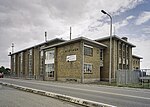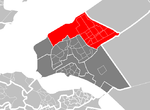Oostvaardersplassen
Birdwatching sites in the NetherlandsEcological experimentsGeography of FlevolandImportant Bird Areas of the NetherlandsLelystad ... and 7 more
Natura 2000 in the NetherlandsNature reserves in the NetherlandsPages with Dutch IPARamsar sites in the NetherlandsRewildingSpecial Protection Areas in the NetherlandsTourist attractions in Flevoland

The Oostvaardersplassen (Dutch pronunciation: [oːstˈfaːrdərsˌplɑsə(n)]) is a nature reserve in the Netherlands, managed by the Staatsbosbeheer (state forestry service). Covering about 56 square kilometres (22 sq mi) in the province of Flevoland, it is an experiment in rewilding. It is in a polder created in 1968; by 1989, its ecological interest had resulted in its being declared a Ramsar wetland. It became part of Nieuw Land National Park when that was established in 2018.
Excerpt from the Wikipedia article Oostvaardersplassen (License: CC BY-SA 3.0, Authors, Images).Oostvaardersplassen
Lelystad
Geographical coordinates (GPS) Address Nearby Places Show on map
Geographical coordinates (GPS)
| Latitude | Longitude |
|---|---|
| N 52.45 ° | E 5.3666666666667 ° |
Address
Lelystad
Lelystad
Flevoland, Netherlands
Open on Google Maps









